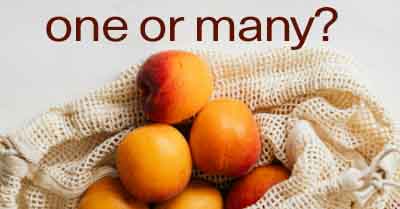This level:
intermediate
advanced
Understanding Simple and Complex Subjects
The Simple Subject
The simple subject is the main word or phrase that refers to the grammatical subject of the sentence, that is, the person, place, thing, or idea that the main verb agrees with. The simple subject is the “core” or main part of the subject.
Simple subjects
The sentences below have simple subjects (highlighted in bold):
- Family is important. (simple subject: family)
- Teamwork requires good communication. (simple subject: teamwork)
- George Washington served as the first president of the United States between 1789 and 1797. (simple subject: George Washington)
- Peru is known for its rich cultural heritage and stunning landscapes.(simple subject: Peru)
The Complex Subject
Articles, adjectives, phrasal verbs, and even embedded clauses can be added to the simple subject. The resulting construction is called a complex subject.
The main verb in a sentence must agree with the simple subject.
Adding information to a simple subject turns it into a complex subject; however, the simple subject stays the same. (See the examples below.)
From simple to complex subjects
In the following examples, the complex subject is highlighted, and the simple subject is in bold.
Example 1
-
Family is important in our lives. (Simple subject: family)
- A strong family is important in our lives. (Simple subject: family. Complex subject: A strong family.)
- A strong family working together is important in our lives. (Simple subject: family. Complex subject: A strong family working together.)
- A strong family working together during both the good and the bad times is important in our lives. (Simple subject: family. Complex subject: A strong family working together in difficult times.)
In each of the above sentences, the simple subject (”family") remains the same, and the verb (”is") agrees with it.
Example 2
- Learning takes a great deal of commitment. (Simple subject: learning.)
- Learning a new language takes a great deal of commitment. (Simple subject: learning. Complex subject: Learning a new language. )
- The most common online learning currently adopted in most American colleges takes a great deal of commitment. (Simple subject: learning. Complex subject: The most common online learning currently adopted in most American colleges. )
Identifying Singular and Plural Simple Subjects
A plural subject refers to more than one person, place, thing, or idea. A singular subject refers to only one.
For example, ”peaches” can be used as a plural simple subject as in
The peaches look delicious.

Karolina Grabowska | Pexels
The verb agrees with “peaches” (plural), “look” not “looks.”
Now look at this sentence
The bag of peaches is in the kitchen.
”The bag of peaches” is a complex subject, where “the bag” is the singular simple subject (not the peaches). The verb agrees with the simple subject “a bag," so it must be “is hanging,” not “are hanging.”
Misleading Complex Subjects
Sometimes we make mistakes in subject-verb agreement because we make the verb agree with the word closest to the verb. To avoid making this mistake, we must identify the simple subject and make the verb agree with it.
For example, in the sentence sentence below, you may be tempted to make the verb agree with “expenses” (or even “Americans”); however, when you find the actual simple subject in the sentence, you realize it is a singular subject (“the number” ).
The number of Americans who cannot afford medical expenses has increased in the last two decades.
The simple subject is “the number,” that is, you are expressing that “the number has increased” (not have).
Below are a few more examples,
Examples of misleading complex subjects
What is the correct verb in each sentence below?
- The strong winds generated by the storm (has/have) damaged several buildings.
- A common problem in student essays (consists/consist) of poor formatting.
- The increase in the number of work-related accidents (is/are) a cause of great concern.
Sentence 1 has a plural subject. Because the word “storm” is right next to the verb, you may think incorrectly that it is the subject.
However, the simple subject is “winds.” Essentially, the idea is that these winds have damaged several buildings.
Sentence 2 is the opposite problem. You may think that the verb must agree with “essays;” however, the simple subject is (a common) problem, which is a singular subject. The verb must agree with it. The problem consists of poor formatting, not the essays.
In Sentence 3, the simple subject is increase. The increase is a problem for concern, not accidents.
The Gerund (Verb + ing) as the Subject
In English, you can use the gerund form of any verb (verb + -ing) to create a noun. “Learning," "taking,” and “eating" can all be used as noun; therefore, they can be used as the simple subject. The complex subject is highlighted and the simple subject is in bold in the following examples:
- Learning a language without the proper resources is very challenging. The simple subject is “learning.”
- Taking my dogs to the park on Saturdays is a fun activity. The simple subject is “taking.”
- Eating fruits and vegetables keeps you healthy. The simple subject is “learning.”
Notice that the verb agrees with the singular simple subjects (learning, taking, and eating) in these sentences.
”The Number” vs. “a Number of”
As we saw earlier, “the number” is a singular noun; however, the following sentence, uses “a number of” as an expression (similar to “a lot of”), which is part of a plural subject:
A large number of Americans have not voted in the last presidential elections.
You would not say “a lot of people has,” right? “A number” and “a lot” are similar expressions, and they build plural subjects such as “a number (or a lot) of people,” “a number of (or a lot of) cities," “a number of (or a lot of) solutions,” and so on.
Other “troublesome subjects” (e.g., using a number, a majority, or most of) can be problematic, particularly in formal English, where you may see more complex sentences compared to the sentences in everyday, spoken language. Depending on how they are used, they can make the simple subject singular or plural depending on the noun attached to them.
These troublesome subjects will be covered in separate lessons. (See “Related Lessons” below. ) In this lesson, we covered only the basics in complex and simple subjects; just be aware that it can get a bit more complex.
Assess Your Learning
Practice 1. Practice finding the simple subject in complex subjects.
Practice 2. More practice finding the simple subject in complex subjects.
Practice 3. Practice subject-verb agreement with complex subjects.
Practice 4. Practice subject-verb agreement with complex subjects in more complex sentences.
Back to Catalog
Writing Skills List
Congratulations on completing this lesson!

Thanks to our supporters!
This material has been made possible by supporters like you. Learn how you can support us.
Thank you for Supporting Snap Language
Snap Language supporters make the creation of these materials possible.
Learn how you can support our work, get perks, and help us continue creating high-quality materials.
You can support us by simply white-listing this site.